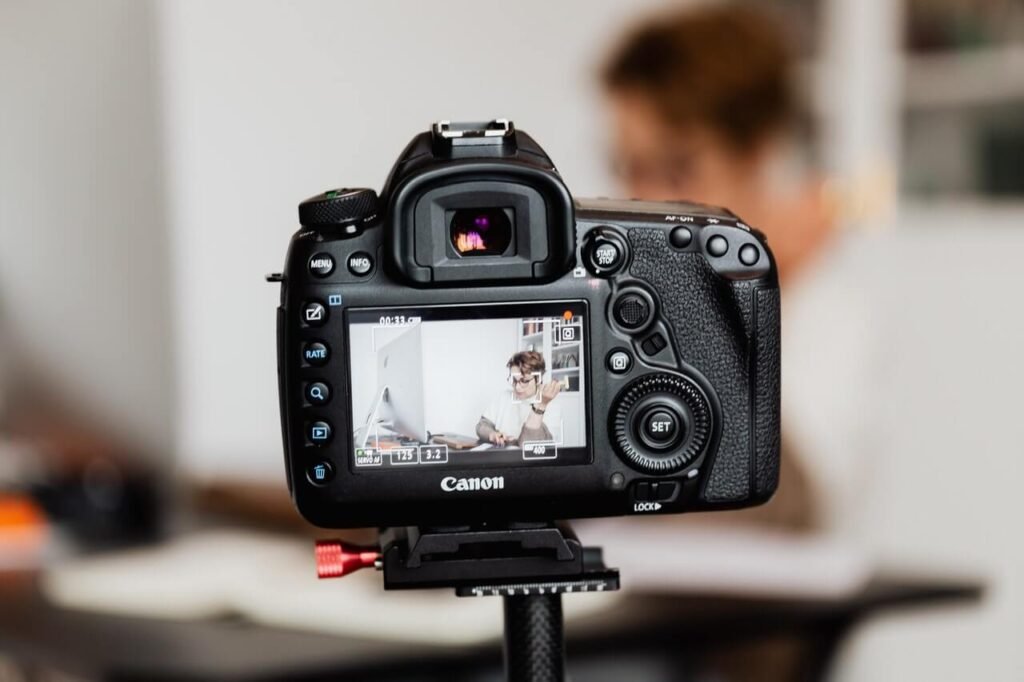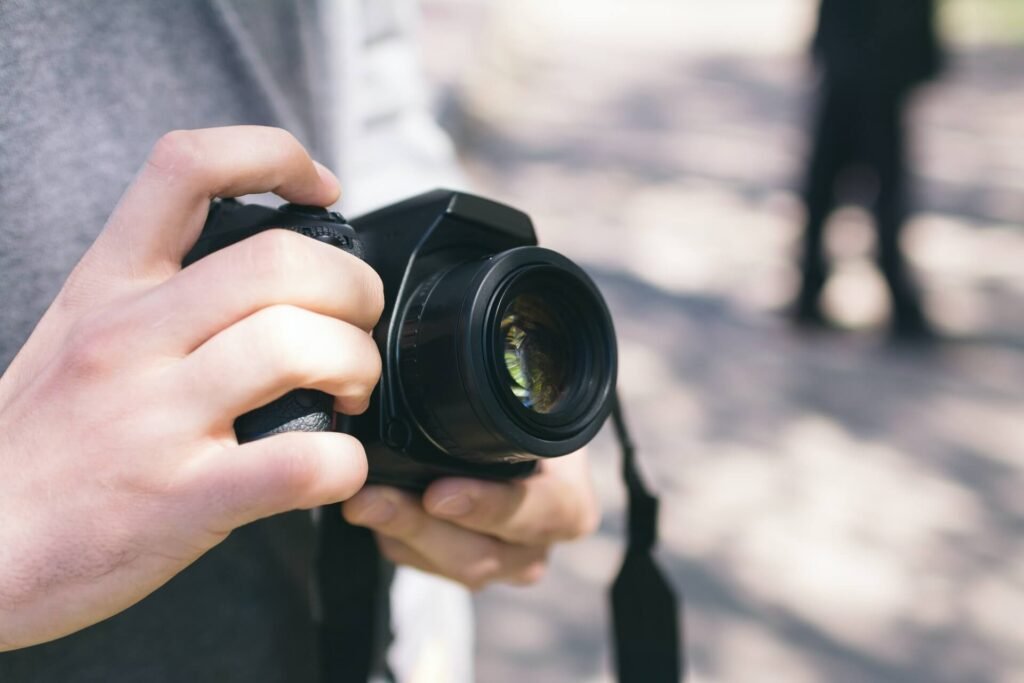Vlogging is becoming a trend now. With self-made vlogging experts like Peter McKinnon and Casey Neistat showing their day-to-day lives on YouTube, everybody is eager to follow the same thing. From college students to retired couples who love to travel, more and more people are now recording things on their smartphones, converting their old DSLR cameras to vlogging rigs, and uploading things about their life on social media. Any equipment can be used for vlogging, but equipment can vary based on the user’s requirements and style. With so many varieties of vlogging camera available, here are a few important things to consider while buying a vlogging camera.
A smartphone is portable, small, and can be always carried in a pocket, whereas high-end mirrorless cameras provide better image quality. Let us find what are the things to consider while buying a vlogging camera.
Choosing a Vlogging Camera
Whether you are just into vlogging or are an experienced blogger who wants to upgrade your equipment, selecting the right camera is important. The vlogging camera marketplace can be a headache to navigate through with so many choices and questions to keep in mind. What camera resolution do I need? Do I need to go for stabilization? Can I use a smartphone for vlogging? These are some of the common thoughts that strike our minds when we think about vlogging.
Things to Consider While Buying a Vlogging Camera
While choosing a kit, balance sensor size, and camera
A camera with a large sensor will give you improved quality images, but when you are vlogging, it is significant to balance sensor size with the whole size of the camera. For instance, a PowerShot G series camera with a built-in lens, like the Canon PowerShot G7 X Mark III, is the most portable and compact camera. However, a mirrorless camera or a DSLR which comes with interchangeable lenses will provide you a variety of lens choices.
Having both a larger and smaller camera will cover you while you shoot for various purposes and will also offer you extra camera angles in your vlogs.
Image quality
This is one of the important things to consider while buying a Vlogging camera. An important thing to consider is whether you must record your vlog in 1080 p or 4k. These days, new smartphones and small vlogging cameras provide 4 k recording, letting you publish your vlog in front of everyone with a stunning resolution. Simple, right? Well, unless you have a high-performance computer with you, it may take some time to edit your vlogs in 4k. Also, most people still watch content on their smartphones with resolutions up to 1440p, which means your beautiful 4K vlog may not be seen in its total glory.

However, vlogging in 4K does, future-proof your videos as more and more people are buying 4K-capable TVs and monitors. Vlogging in 4K also lets you crop the video during the process of editing, which opens your creative potential further. This provides the effect of a close-up camera angle when you have simply zoomed in on a wide-angle shot.
Decide your frame and resolution rate
All of us know that the demand for video is increasing and with it the expectations for quality also. No matter how creative your content maybe, if the footage will lack detail, it is worth improving. Search for cameras with Full 4k or HD video- Full HD is a great standard to set, but 4K will offer you even more detail, letting you crop and stabilize your footage without affecting its quality. Shooting in 4K does not mean that you need to publish in 4K, but keep in mind that 4K footage will take consume more time to edit and upload.
The option to shoot in 4K is no longer restricted to professional cameras. It is starting to be seen in small yet feature-rich cameras, like the Canon EOS M50. However, the most significant thing to consider is what frame rate will suit your subject rightly. 60 frames per second are best suited for action vlogs and will you an option to perform slow-motion effects. 30 fps or 25fps will be perfect fr everything else. For more detailed and slow-motion footage, you can go with the Canon PowerShot G7X Mark III that offers fast frame rates up to 120 fps when you shoot in full HD.
Stabilization
It is extremely important for the quality of a vlog and the viewer’s experience. Essentially, this method refers to methods that avoid any shaking during the recording procedure. Gimbal stabilization, not to get confused with electronic image stabilization is mostly used by filmmakers to make smooth footage. This method often uses a 3-axis gimbal, which consists of a system of brushless motors that correct the camera’s movement.
Optical image stabilization makes use of moving elements inside the camera lens to get rid of shaky footage. Alternatively, some cameras also come with in-built EIS, which uses software to rectify the camera shake. The biggest disadvantage of EIS is that it lessens image quality, which is often characterized by a strange warping effect of footage. Usually, most smartphones have a combination of digital and optical stabilization, whereas DSLR stabilization can vary based on the lens.
Megapixels/ Resolution
This is one of the significant things to consider while buying a Vlogging camera. This is a number that will be thrown around a lot of times to try and impress. Generally, the higher the number of megapixels, the better it sounds.
Sensor size
The sensor is the board that the pixels or dots sit on to collect light. The huge the sensor, the bigger the dots/ pixels can be, which means more data, light, as well as clarity for your images. Small cameras like action cameras come with all sensors. On the other hand, large cameras like DSLRs have full-frame and large sensors.
Microphone
For most of the vlogging footage, you will want to be able to record audio, mostly your voice. Most of the cameras meant for vlogging contain inbuilt microphones, but all microphones are not created equal.

Most of the inbuilt microphones are not fit for purpose when it comes to offering clear sound, mainly when it comes to separating your voice from traffic. For this reason, it is better to have a vlogging camera to have an in-built microphone so that you can attack a high-quality, external mic.
Weight
Cameras are not generally heavyweight. However, when you hold some of them with an extended arm for a long time, then you feel tired. When it comes to the vlogging camera, it should be lightweight, so that you can carry with you even for the whole day, if required.
Wi-Fi Connectivity
This is a necessity that cannot be ignored. Wi-Fi connectivity helps you to transfer your videos to your smartphone quickly so that you can upload them on different social media channels now and then. Wi-Fi connectivity is important for doing live streaming, offering vloggers the ability to stream to their chosen social media platforms directly and connect extra accessories like monitoring devices, gimbals, and follow a focus.
Low-light performance
This factor is especially important if you are vlogging at night or indoors or shooting in places where there is not enough light. Though smartphone sensors have significantly enhanced, Mirrorless image sensors and DSLR cameras typically provide better low-light performance.


